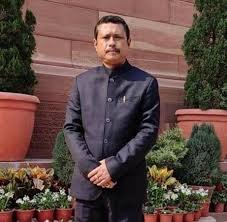ISRO successfully launched the SpaDeX mission, a crucial step towards demonstrating space docking technology, a key enabler for future space missions like a space station and lunar sample return.
BY PC Bureau
The Indian Space Research Organisation (ISRO) successfully launched a mission on Monday evening that will demonstrate space docking technology, a critical step for future Indian space missions, including a planned space station.
ISRO Chairman S Somanath explained that the rocket successfully placed the two SpaDeX satellites in the intended 475 km circular orbit. “So, as far as we are concerned, the rocket has placed the spacecraft in the right orbit and the SpaDeX satellites have moved one behind the other, and over the period of time, it will pick up further distance, travel about 20 km away and then the rendezvous and docking process will start. And we hope that the docking process can happen in another week and the nominal time is going to be approximately January 7,” he said.
“They are payloads and are not satellites. They are going to be attached to the fourth stage (of the PSLV rocket) for conducting experiments over the next two months. The upper stage of the PSLV rocket will be brought down to a lowered orbit to 350 km and that process is currently going on. After that, we will have many activities to continue,” Somanath, also the Secretary, Department of Space, said.
Regarding the Space Docking Experiment, Somanath said scientists will conduct various operations from ISTRAC Bengaluru, with the docking expected to occur “possibly on January 7.”
“So, we will be able to see that from the Control Centre, ISTRAC, Bengaluru. All those activities of docking, including telecasting of the onboard images from the camera of the docking processes,” he said.
Somanath, along with SpaDeX Project Director N Surendran, Mission Director M Jayakumar, and other officials, expressed pride in this accomplishment, highlighting its significance for future missions like Chandrayaan-4 and the planned space station.
“Really important mission for us, this you know, with the space sector reforms, and expansion of space activities. Then we have human space flight programmes, building space stations etc. This (Monday’s) mission is so critical for us to work on future missions like the Chandrayaan-4, missions to the Moon as well,” he said.
Mission Director M Jayakumar emphasized the importance of POEM-4, which includes experiments like debris capture and biological research. He also noted the successful launch of two PSLV missions from the same launch pad within a month.
Dubbed as a prelude to ISRO setting up its own Space Station by 2035, the PSLV-C60 mission will make India one of a few countries with this advanced space docking capability.
The 44.5-meter-tall rocket carried two spacecraft – Spacecraft A (SDX01) or the ‘Chaser’ and Spacecraft B (SDX02) or the ‘Target’ – which will be merged together at an altitude of about 470 km.













